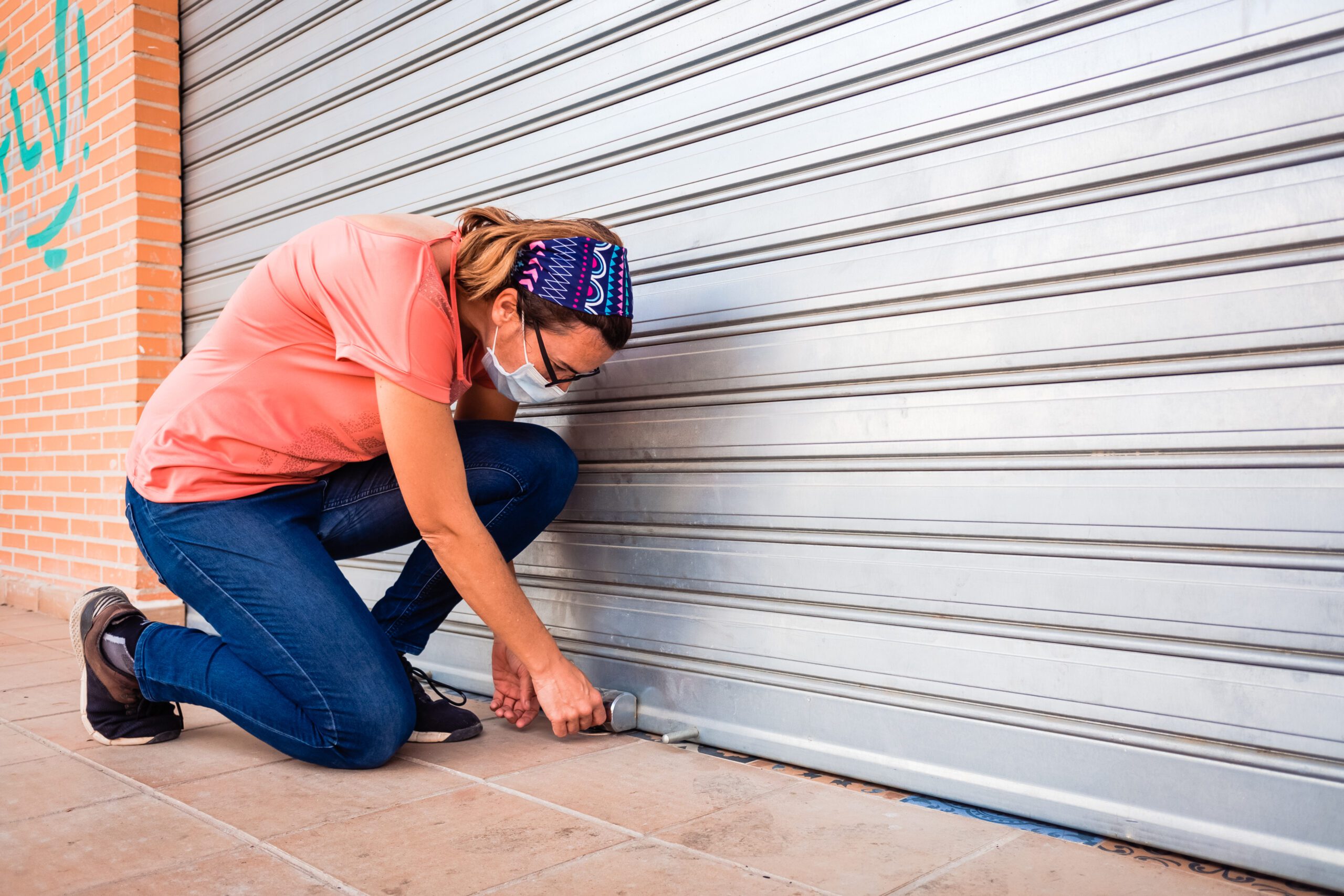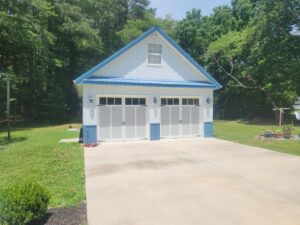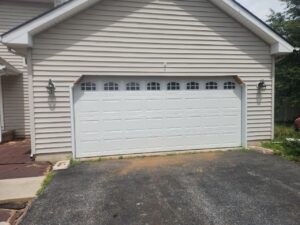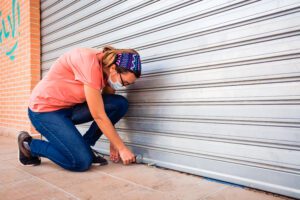Most homeowners don’t think twice about their garage door until something goes wrong. But here’s the thing – a little preventive care goes a long way.
Regular maintenance can save you from dealing with a door that won’t open on a busy Monday morning or, worse, a safety hazard that puts your family at risk. And with the right approach to door maintenance, you can prevent costly repairs and extend your door’s lifespan. Read our article to know how.
Starting Your Ultimate Annual Garage Door Maintenance Checklist
1. Begin With A Thorough Visual Inspection
Before diving into any hands-on work, take a step back and really look at your garage door. This visual inspection is the foundation of effective door maintenance and can reveal issues before they become expensive problems.
Start by operating your garage door and watching how it moves. Does it glide smoothly, or does it jerk and hesitate? Listen carefully for any unusual sounds – grinding, squeaking, or rattling can all signal that your door needs attention. A well-maintained garage door should move quietly and steadily.
Next, examine your door panels closely. Look for signs of warping, cracks, dents, or peeling paint. These cosmetic issues might seem minor, but they can lead to bigger problems if left unchecked. Weather damage to noise reduction not only affects your home’s curb appeal but can also compromise the door’s structural integrity.
2. Check Essential Hardware and Moving Parts
Once you’ve completed your visual assessment, it’s time to get up close and personal with your garage door’s hardware. Over time, the constant vibration from opening and closing can cause bolts and brackets to work loose. That’s why you need to tighten bolts regularly as part of your annual routine.
Grab a socket wrench and systematically check every bolt, bracket, and fastener you can safely reach. Pay special attention to the hinges, track mounting brackets, and any hardware connected to the door opener. This simple step can prevent many common garage door problems and contribute significantly to noise reduction.
While you’re focusing on hardware, don’t forget about your door’s rollers and tracks. These components take a beating every time your door operates.
Clean the tracks with a damp cloth to remove dust, debris, and any buildup that could interfere with smooth operation. If you spot any rust on metal parts, now’s the perfect time for some rust prevention – sand away the corrosion and apply a rust-resistant spray.
Just a heads up: Never attempt to adjust or repair springs, cables, or other high-tension parts yourself. These components can cause serious injury or death if mishandled. Similarly, major track realignment or motor repairs should be left to trained technicians.
Also Read: Average Cost of A New Garage Door: Questions to Consider Before Purchasing a New Garage Door
3. Lubricate Essential Garage Door Parts
Here’s where many homeowners go wrong – they either skip lubrication entirely or use the wrong products. Proper lubrication is crucial for smooth operation and noise reduction, but it needs to be done correctly.
Use only silicone-based or lithium-based garage door lubricants. Avoid WD-40, which can actually attract dirt and grime over time.
Apply lubricant to all metal moving parts, including hinges, springs, metal rollers, tracks, and bearings. However, never lubricate nylon rollers – they’re designed to operate dry.
After applying lubricant, wipe away any excess to prevent dirt buildup. This can dramatically extend the life of your garage door components.
4. Don’t Ignore Safety Tests
Your garage door maintenance checklist isn’t complete without thorough safety testing. These tests can literally be lifesavers, so don’t skip them.
Start with the balance test. Disconnect your garage door opener and manually lift the door about halfway up. If your door is properly balanced, it should stay in place. If it slides down or shoots up, your springs need professional adjustment. This isn’t a DIY job – springs are under tremendous tension and require professional expertise.
Next, test your door’s auto-reverse feature. Place a block or piece of wood in the door’s path and close it using your opener. The door should immediately reverse when it contacts the obstruction. If it doesn’t, you need professional service right away.
Don’t forget to check your photo-eye sensors too. These safety devices should stop and reverse the door if anything breaks the light beam while the door is closing. Test them by waving an object through the beam during closure.
5. Weatherproofing and Aesthetic Maintenance
Your door panels face constant exposure to the elements, making regular cleaning and maintenance essential. Wash your garage door with mild detergent and water, but avoid high-pressure washers that can force water into places it shouldn’t go or damage the door’s finish.
Check your weatherstripping regularly. These seals around the bottom and sides of your door block drafts, moisture, and pests. Replace any weatherstripping that’s cracked, brittle, or missing. Good seals also help with temperature control in your garage and can reduce energy costs.
If you notice paint peeling or rust spots, address them promptly. Sand away any rust, apply primer, and touch up the paint. This rust prevention step is especially important in coastal areas or regions with harsh winters, where salt can accelerate corrosion.
Also Read: Choosing The Right Garage Door Color For A Dark Exterior: Contrast, Match, Or Blend
When to Call the Professionals: Knowing Your Limits
While there’s plenty you can do yourself, some aspects of garage door maintenance require professional expertise. Annual professional inspection of springs, cables, and other high-tension components is essential for safety and can catch problems you might miss.
Never attempt to adjust or repair springs, cables, or other high-tension parts yourself. These components can cause serious injury or death if mishandled. Similarly, major track realignment or motor repairs should be left to trained technicians.
Maintenance Tips for Different Door Types and Climates
Different garage doors have different needs. Steel doors require more attention to rust prevention, while wood doors need regular sealing and painting. If you live in a harsh climate, you might need to adjust your maintenance schedule accordingly.
In areas with extreme temperature swings, pay extra attention to your door’s balance and spring tension. Cold weather can affect metal components, while excessive heat can cause expansion issues.
Making Garage Door Maintenance a Family Priority
Teaching family members about basic garage door safety and maintenance can prevent accidents and help identify problems early. Show older children how to recognize warning signs and emphasize that the garage door isn’t a toy.
Keep maintenance supplies organized and easily accessible. Having the right lubricants, cleaning supplies, and tools ready makes it more likely you’ll stick to your maintenance schedule.
Also Read: Comprehensive Garage Door Size Charts
Conclusion
Consistency is key when it comes to garage door maintenance. Many homeowners find that scheduling their annual maintenance in early spring works well – it prepares the door for increased use during active months and addresses any winter damage.
While there’s a lot you can handle on your own, some garage door maintenance tasks are best left to the pros. An annual inspection of your springs, cables, and other high-tension parts is important for your safety and can help spot any issues you might miss. Whenever you’re ready, we’re just a call away!



